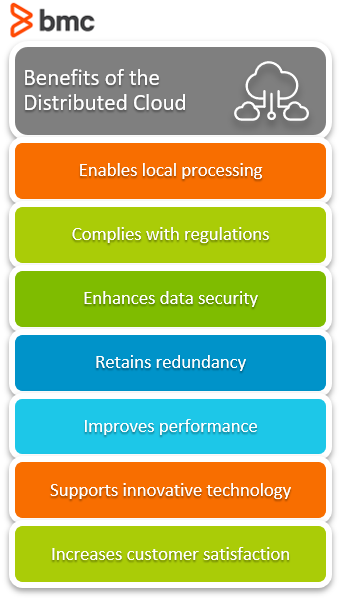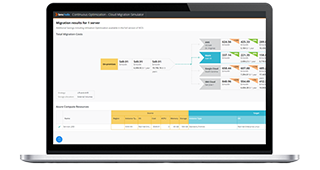A trend in cloud data processing is making things better for businesses yet again. Gartner predicts that more than 50% of data generated by enterprise business will be held and processed outside a typical single cloud or central data center environment by 2022. That’s a steep jump from 10% or so today.
So, what is this distributed cloud trend? How are enterprise businesses using it to add power to their infrastructure? Keep reading to find out.
What is a distributed cloud?
If you’re in IT, you may have come across a distributed database. If that’s so, you may have a reasonable concept of distribution. In a distributed database, data is processed across the infrastructure, using computing nodules that each have their own processing capabilities (versus one central core). The goal is two-fold:
- Better performance
- Better security
In the age of cloud services, the Internet of Things and web services platforms have already disrupted digital businesses, forcing the heavy hand of change. With that change comes new challenges to enterprise infrastructure. For example, performance and security are at the top of the minds of industry leaders.
Some enterprise businesses have adopted a new cloud philosophy that will shape their business infrastructure in the years to come: edge computing. Edge computing is the idea that ensuring the proximal location point of computing services is as close as possible to where your customers are. If you are a national or international company, this concept can be a real challenge.
Enter the distributed cloud, a form of cloud services infrastructure that uses smaller, individual clouds, each with their own processing capabilities, to perform a variety of services for customers across a single network.
(Explore the empowered edge.)

Why use distributed cloud architecture at the edge?
There are many benefits to deploying a distributed cloud architecture at the edge, including:
Enabling local processing
One important advantage of the distributed cloud is that it allows for local processing, or at least as close to local as possible. Distributed clouds offer the advantage of having smaller cloud service processing units closer to your user source all over the region, country, or the world.
By considering the distance between where your customers are making throughput actions and where your cloud actually processes the data, you can ensure:
- Better bandwidth
- Less latency
These outcomes make sense. After all, the data is being processed across a set of locations— not in one central location. And the set of locations is based strategically around areas with numerous customers, so the data doesn’t have to travel as far to meet its processing destination, further increasing both performance and security.
Complying with regulations
Some regulatory agencies, including the E.U. and parts of the U.S., have standards for data that require that data doesn’t travel outside a user’s country. For that reason, it’s important to establish an action plan for processing data in countries where you have customers. A distributed cloud allows you to do this.
Enhancing data security
In a centralized data processing approach, your data is at greater risk of a cyberattack.
Think about it: If all of your important data is housed in one location, if someone is able to get past your firewalls, security, monitoring and encryption, they have access to all of your customer data. In that case, a potential cyber threat could shut down your entire application for however long it takes for you to respond, address, and resolve it.
By managing data across many smaller clouds, successful hackers who break into a single location will only have access to a small percentage of your user’s information, and they will have more points they must access to get all of your information. This makes you less vulnerable to cyberattacks and data breaches. If they do occur, they are less harmful to your overall business.
Additional benefit: If you have to shut down one cloud nodule for maintenance or to prevent a cyberattack, the rest of your business will be unaffected by the decision to do so.
(Learn more about data security & AI cyberattacks.)
Retaining redundancy in case of disaster
This leads us to the concept of redundancy. When you deploy a cloud network of computing systems, you ensure redundancy.
For instance, cloud data storage and processing located near Manhattan users can have a redundant cloud server near Omaha backing up all user data. This allows for access to user data, even in the event of an emergency.
(Read about the impact of redundancy on availability.)
Improving overall performance (satisfied customers)
When you improve your latency, bandwidth, and security metrics your customers benefit from better performance of cloud services. A distributed cloud architecture allows customers to have the best experience possible. That’s one for customer satisfaction and loyalty!
Supporting innovative technology
If you’re just starting to experiment with artificial intelligence (AI) and IoT in your business, you’re not alone. When AI and IoT require low latency for quick decision making, they are better supported by a distributed cloud architecture than they are by centralized architecture. The improved performance allows decision-makers and other employees responsible for monitoring the technology to make smart decisions faster than ever.
Providing central management with decentralized processing
One big benefit of distributed cloud infrastructure is that you can still manage your network of cloud data servers with one centralized interface, allowing you to ensure compliance, monitor security, access customer data, all in support of running an agile business today.





